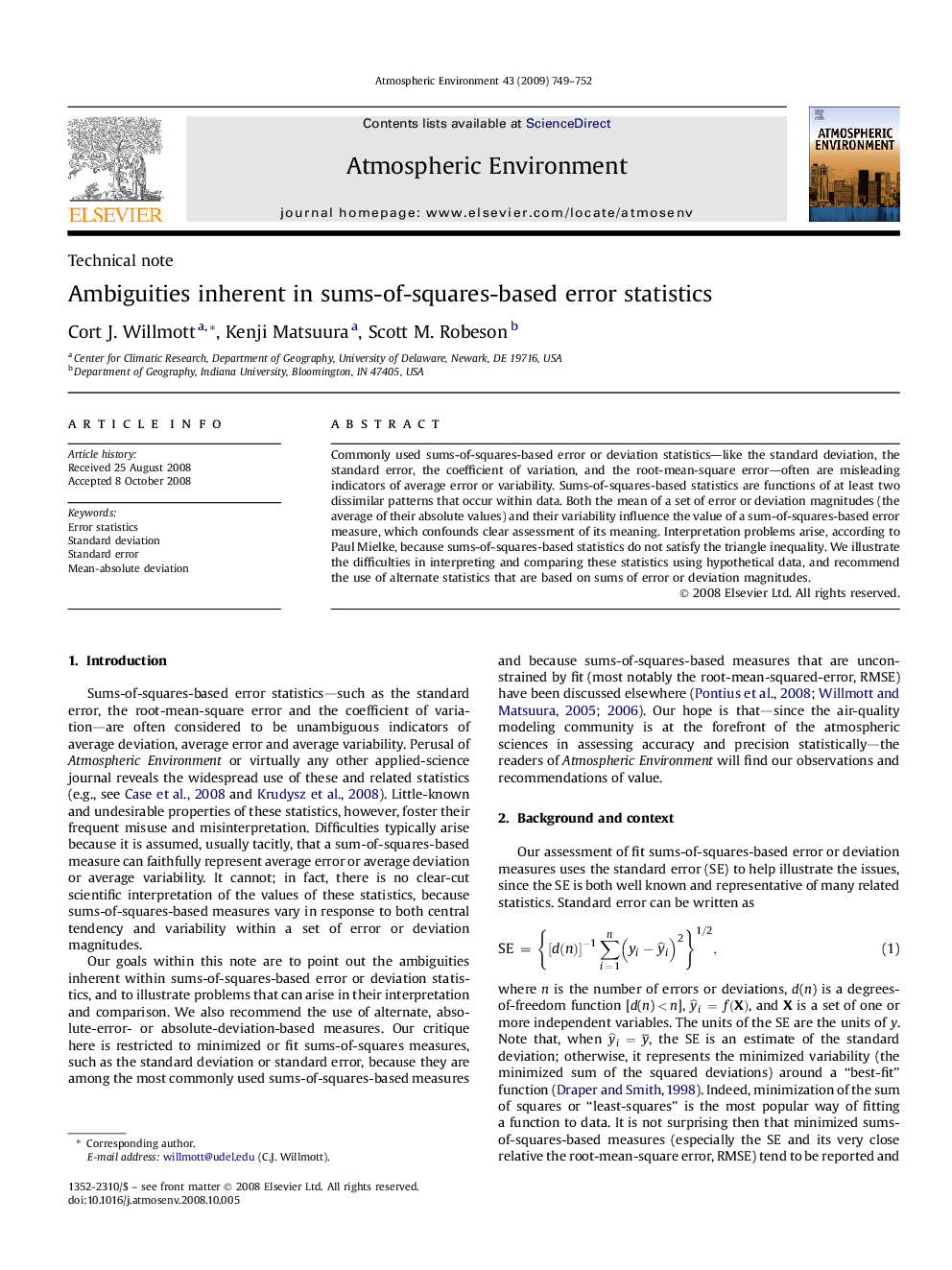| Article ID | Journal | Published Year | Pages | File Type |
|---|---|---|---|---|
| 4442306 | Atmospheric Environment | 2009 | 4 Pages |
Commonly used sums-of-squares-based error or deviation statistics—like the standard deviation, the standard error, the coefficient of variation, and the root-mean-square error—often are misleading indicators of average error or variability. Sums-of-squares-based statistics are functions of at least two dissimilar patterns that occur within data. Both the mean of a set of error or deviation magnitudes (the average of their absolute values) and their variability influence the value of a sum-of-squares-based error measure, which confounds clear assessment of its meaning. Interpretation problems arise, according to Paul Mielke, because sums-of-squares-based statistics do not satisfy the triangle inequality. We illustrate the difficulties in interpreting and comparing these statistics using hypothetical data, and recommend the use of alternate statistics that are based on sums of error or deviation magnitudes.
